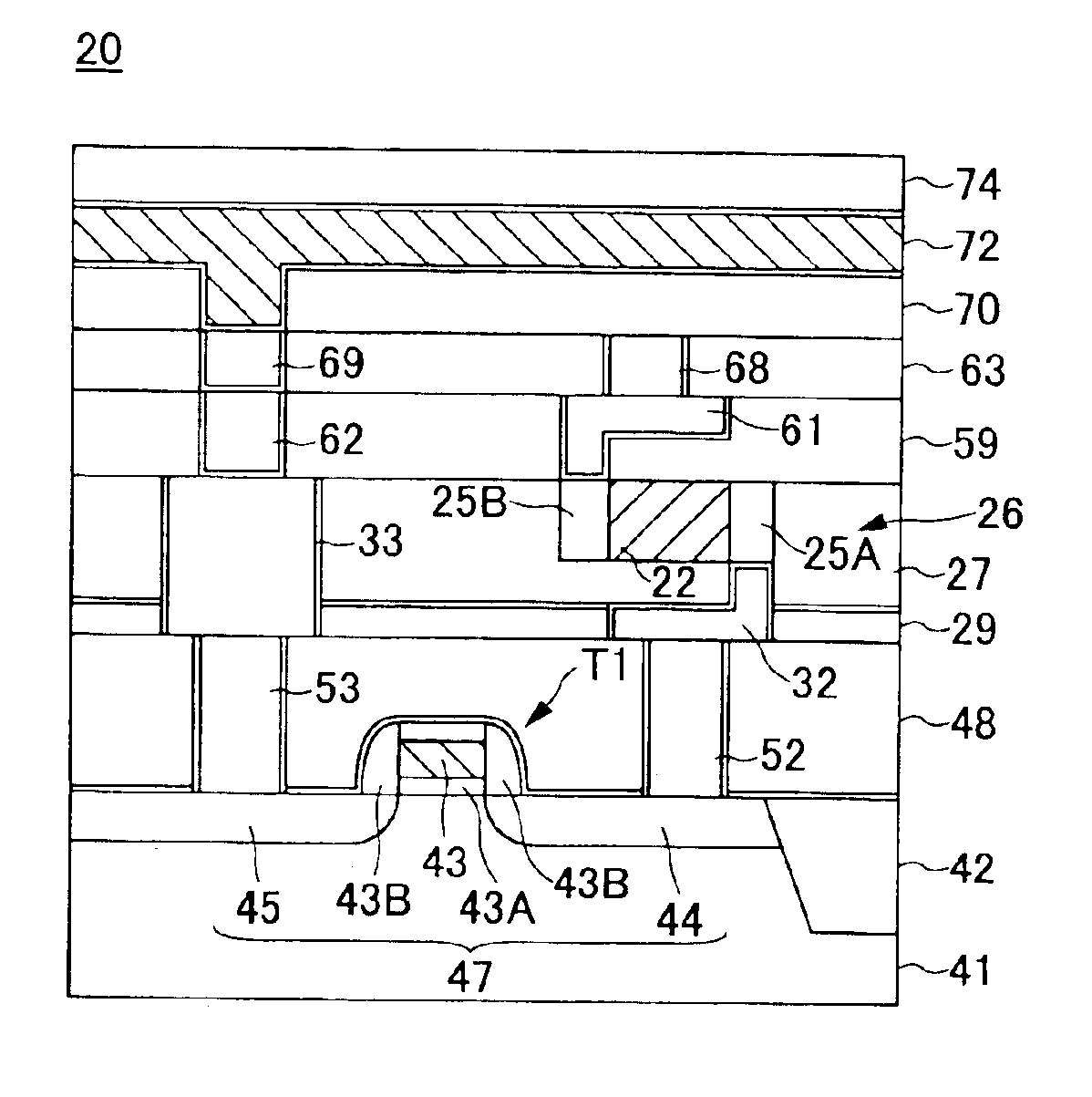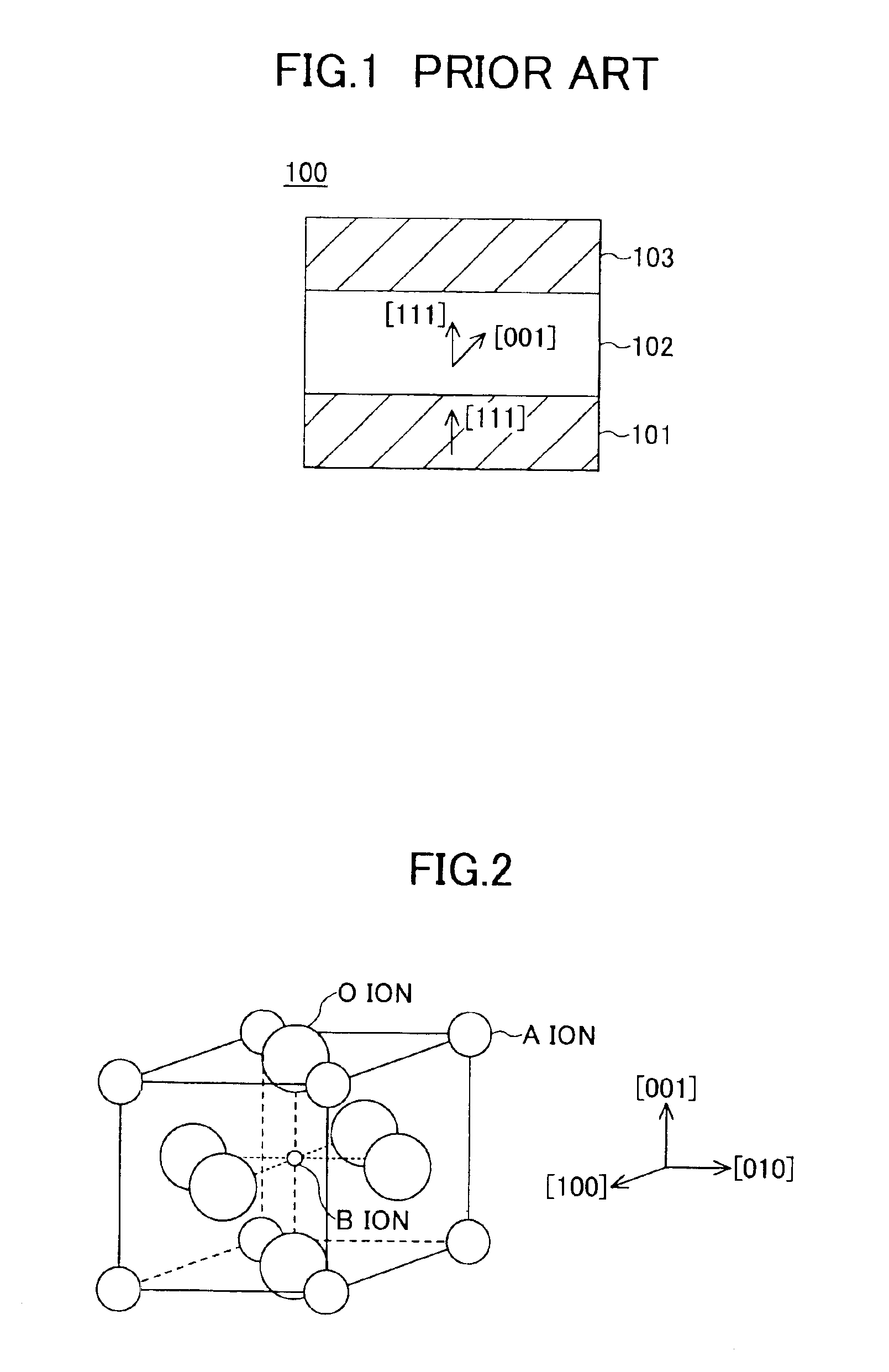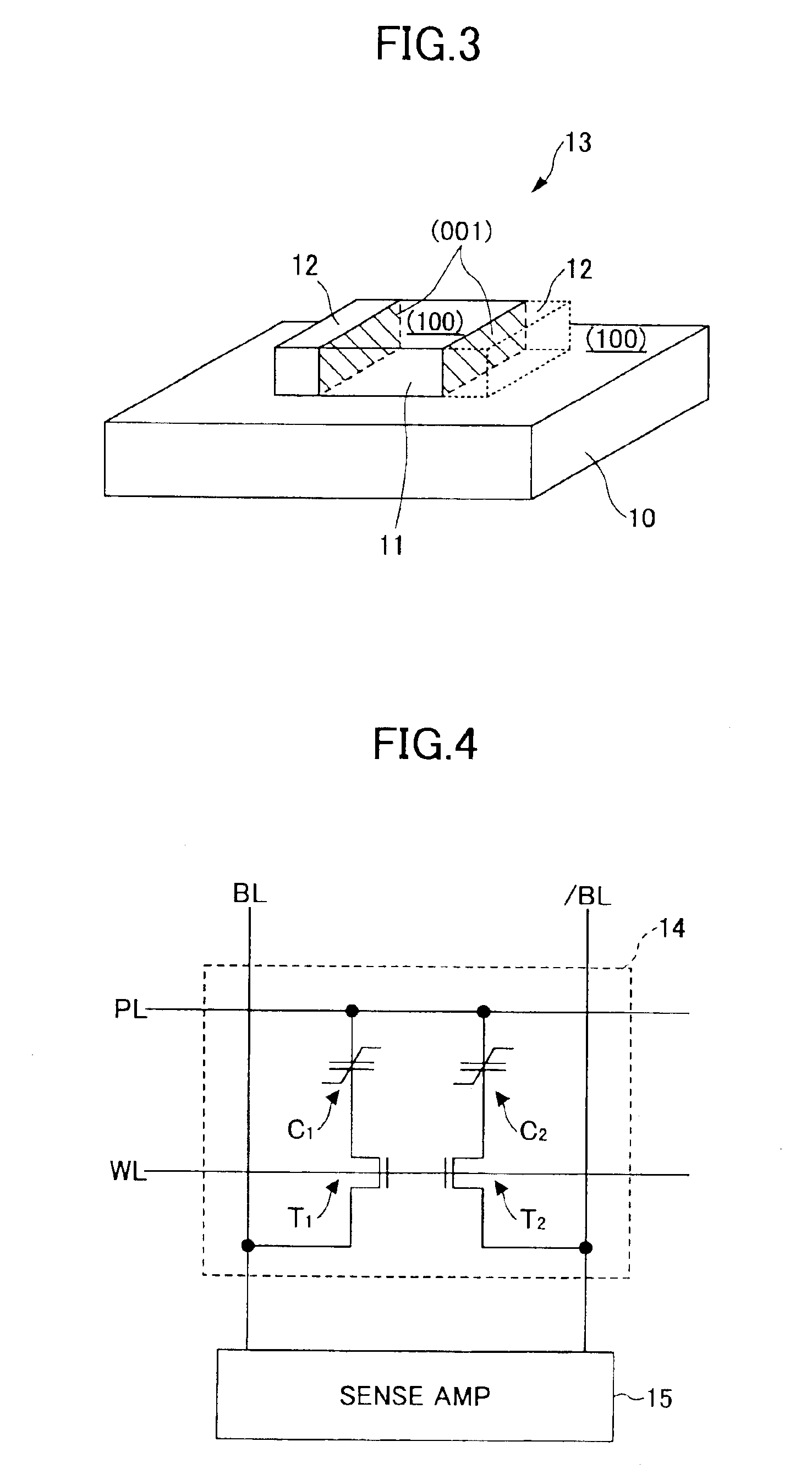Method of manufacturing the semiconductor device
a manufacturing method and semiconductor technology, applied in the direction of semiconductor devices, capacitors, electrical devices, etc., can solve the problems of natural decrease of electric charge usable as remanent polarization, degradation of property, fatigue phenomenon, etc., and achieve the improvement of crystallinity, excellent crystalline quality, and the effect of increasing the reliability of the semiconductor devi
- Summary
- Abstract
- Description
- Claims
- Application Information
AI Technical Summary
Benefits of technology
Problems solved by technology
Method used
Image
Examples
Embodiment Construction
[0030]First, a brief description is given of the principles of the present invention.
[0031]In the following, the case of using a perovskite oxide (an oxide having a perovskite structure) as the ferroelectric film of a ferroelectric capacitor is described as an example. Generally, a perovskite oxide is expressed by the general formula ABO3. FIG. 2 is a diagram showing a perovskite structure. Referring to FIG. 2, in an ideal perovskite structure, a unit lattice is a cube with A ions being disposed at the vertexes, a B ion at the body center, and C ions at the face centers. In this structure, the large-size A and O ions form a cubic closest packing structure with the small-size B ion being in the space formed therein. If the oxide is PZT, the A ions are Pb2+ and the B ions are Zr4+ and Ti4+. The spontaneous polarization of a ferroelectric is caused by asymmetrical displacement of the B ions, which are small and mobile, and is reversible by an external electric field. The B ions are mos...
PUM
 Login to View More
Login to View More Abstract
Description
Claims
Application Information
 Login to View More
Login to View More - R&D
- Intellectual Property
- Life Sciences
- Materials
- Tech Scout
- Unparalleled Data Quality
- Higher Quality Content
- 60% Fewer Hallucinations
Browse by: Latest US Patents, China's latest patents, Technical Efficacy Thesaurus, Application Domain, Technology Topic, Popular Technical Reports.
© 2025 PatSnap. All rights reserved.Legal|Privacy policy|Modern Slavery Act Transparency Statement|Sitemap|About US| Contact US: help@patsnap.com



